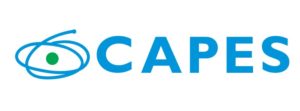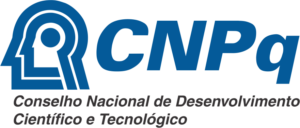Dear users,
The 26ª RAU (Annual LNLS Users Meeting) was really a successful meeting.
Held between August 24-25, 2016 at the LNLS/CNPEM Campus, the meeting was attended by 134 delegates in total. Among them, 26 from foreign institutions and/or companies, representing 7 different countries (Argentina, Chile, Uruguay, Italy, Sweden, Switzerland, United States), and 108 from Brazil. Among the Brazilians, 55 participants from the CNPEM campus attended the meeting, while many others could follow the talks through the online transmission. 7 companies exposed their products. We had a total of 76 communications – 51 posters and 22 orals – and 3 plenary lectures.
The first plenary was an overview of the LNLS facilities by Prof. A. José Roque da Silva, Director of LNLS, who gave the participants a chance to learn first hand the future plans for LNLS facilities. In particular, the ongoing construction of one of the brightest synchrotron x-ray source in the world, SIRIUS, and the moving plans from the UVX, the existing storage ring, to the SIRIUS machine set a perfect scope for the meeting discussions.
In the second plenary, Dr. Jan-Erik Rubensson introduced inelastic x-ray scattering in the soft x-ray domain, emphasizing recent advances on the new high resolution spectrometers in use around the world and placing the Sirius developments in this context. The first day program was complemented with two parallel Oral Communication sessions, whose speakers were chosen among the submitted contributions by the users, and one Poster session. To close the day, the participants could enjoy lively discussions during a cocktail.
The third plenary opened the second day, with Dr. Meitian Wang giving a very comprehensive picture of the field of Synchrotron Serial Crystallography. Tiny crystals may now be studied using original setups. Sample preparation and survival in the intense x-ray beams, as well collecting data strategies, are becoming the main issues in the field.
In the second part, the LNLS Thematic Session proposed a more technical discussion about the UVX and SIRIUS beamlines. Harry Westfahl, the Scientific Director of LNLS, discussed the beam characteristics of both machines, and exposed the technical solution for a transition from the UVX to the SIRIUS storage ring. This talk was followed by presentations of the characteristics of the new beamlines based on undulator insertion devices for the SIRIUS storage ring.
To close the meeting, a panel discussion organized by the Scientific Committee as a round-table opened the possibility for the user community to manifest their wishes and give their opinions about the LNLS status and plans for the future.
Many issues concerning directly the users, like user portal improvements, renewed web site presentation, availability of techniques and instrumentation, user education in advanced techniques, sharing responsibilities among external institutions and internal education programs, have been treated during the session.
Nevertheless, the main point of discussion was the transition plans from the UVX to the SIRIUS machine.
It became clear that a solution keeping the two machines running with an overlap would be hardly feasible due to reasons related to lack of personnel and maintenance issues.
The solution that has deepen among the audience contemplated:
- Follow the commissioning of the SIRIUS storage ring by the installation of the new planned beamlines;
- Move a few beamlines working nowadays on the UVX storage ring to SIRIUS. These beamlines would not be optimized at SIRIUS but would provide a much better performance than at the UVX storage ring.
- Shutdown the UVX storage ring.
The plans and the technical requirements were presented in the Scientific Director’s talk and discussed during the session. Moving these beamlines to SIRIUS makes use of many UVX pieces of instrumentation that have been working fine. Having these beamlines available for users would require a much short commissioning period at SIRIUS. The plan foresees roughly a six-month period for the transition.
Such six-month “dark” period is seen as very acceptable by the users present in the audience, as well as by the LNLS staff. According to the SIRIUS installation scheduled, this “dark” period would probably happen by the end of 2018 through the first semester of 2019.
A more detailed plan should be presented by LNLS along 2017.
At the conclusion of the meeting, the participants had the opportunity to visit the works on the LNLS campus, where the SIRIUS building is under construction. They were very excited by the advances in the works.
The 26ª RAU meeting was able to attract many users and researchers, as well as leading scientists to lecture. The meeting has met the objective of encouraging debates, exchanging experiences and integrating the LNLS user’s community.
The generous support from the funding agencies – FAPESP, CAPES and CNPq – to the 26ª RAU was essential to the success of the meeting.
José Roque da Silva, Director of the LNLS
Eduardo Granado, Chair of the Scientific Committee
Hélio Tolentino, on behalf of the Local Committee
Supported by


